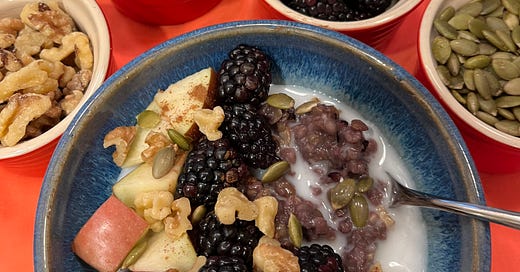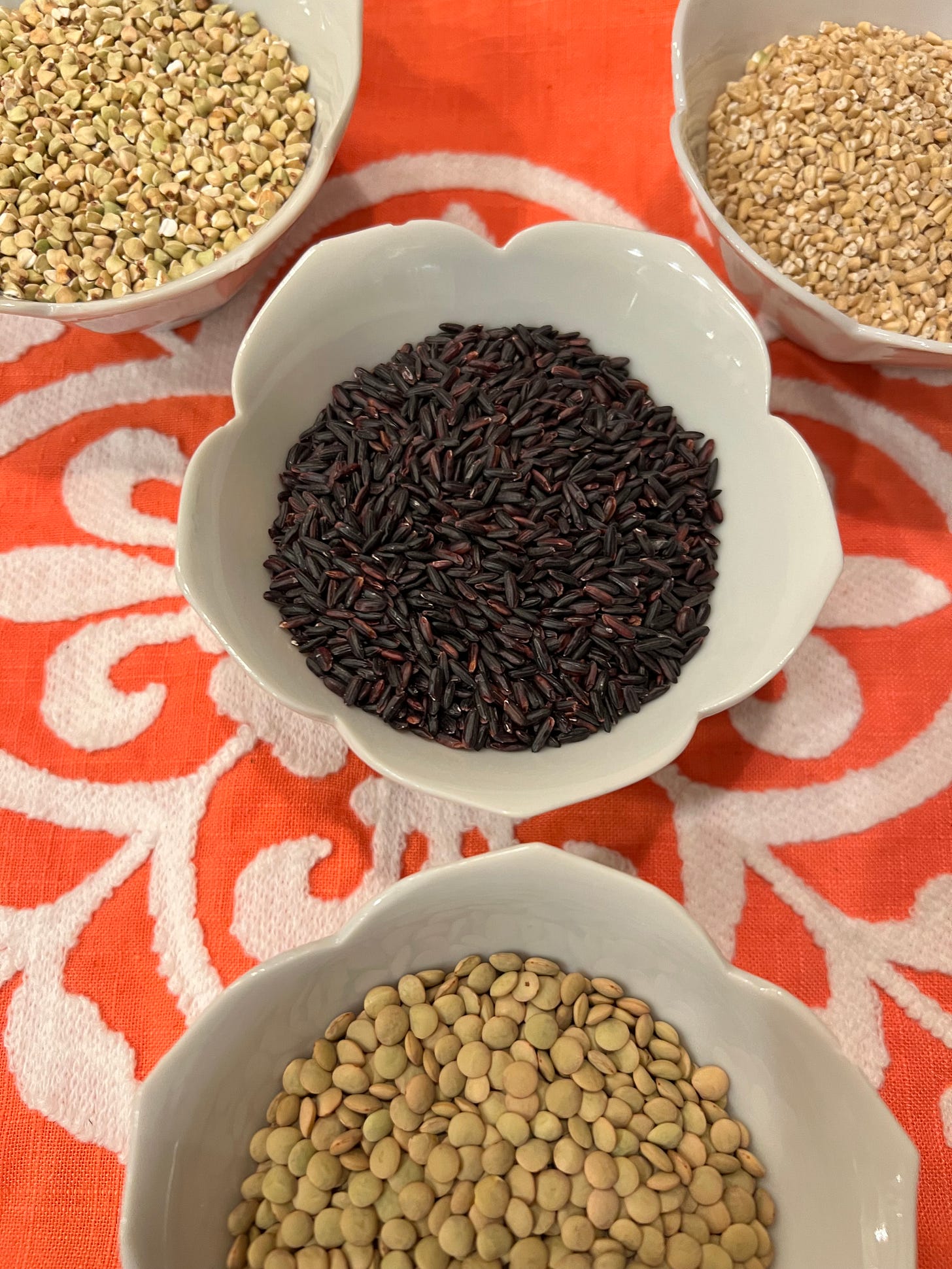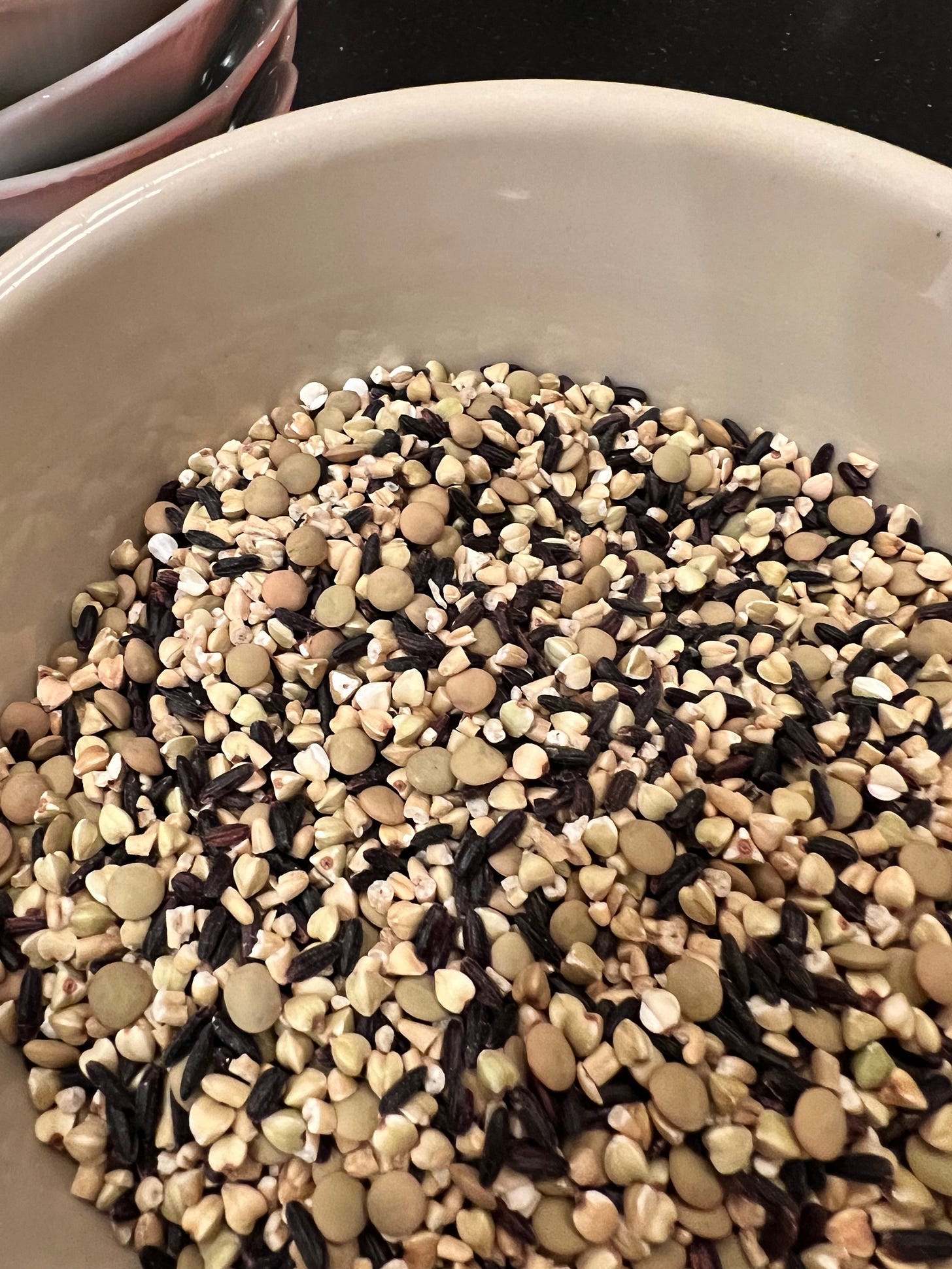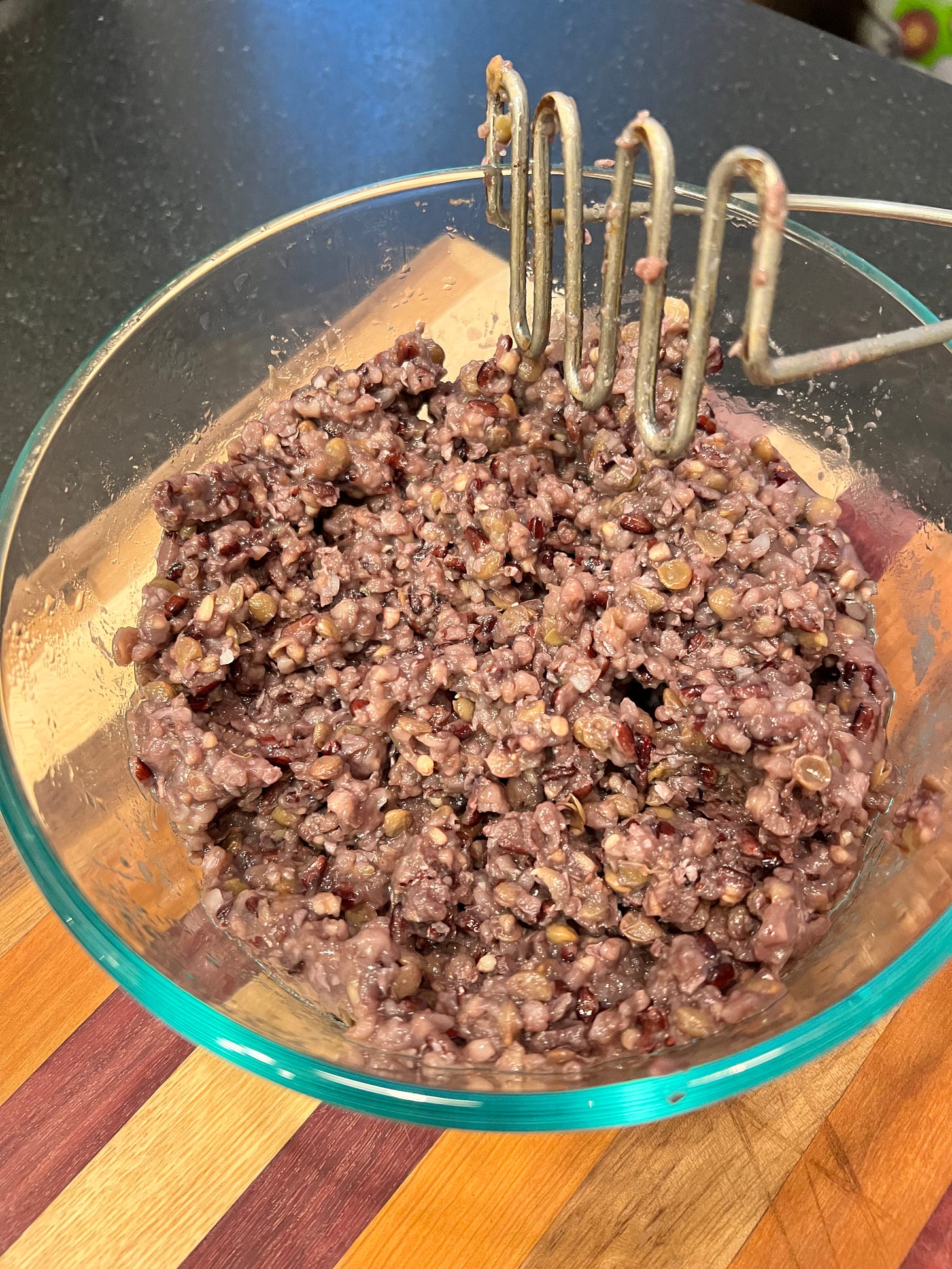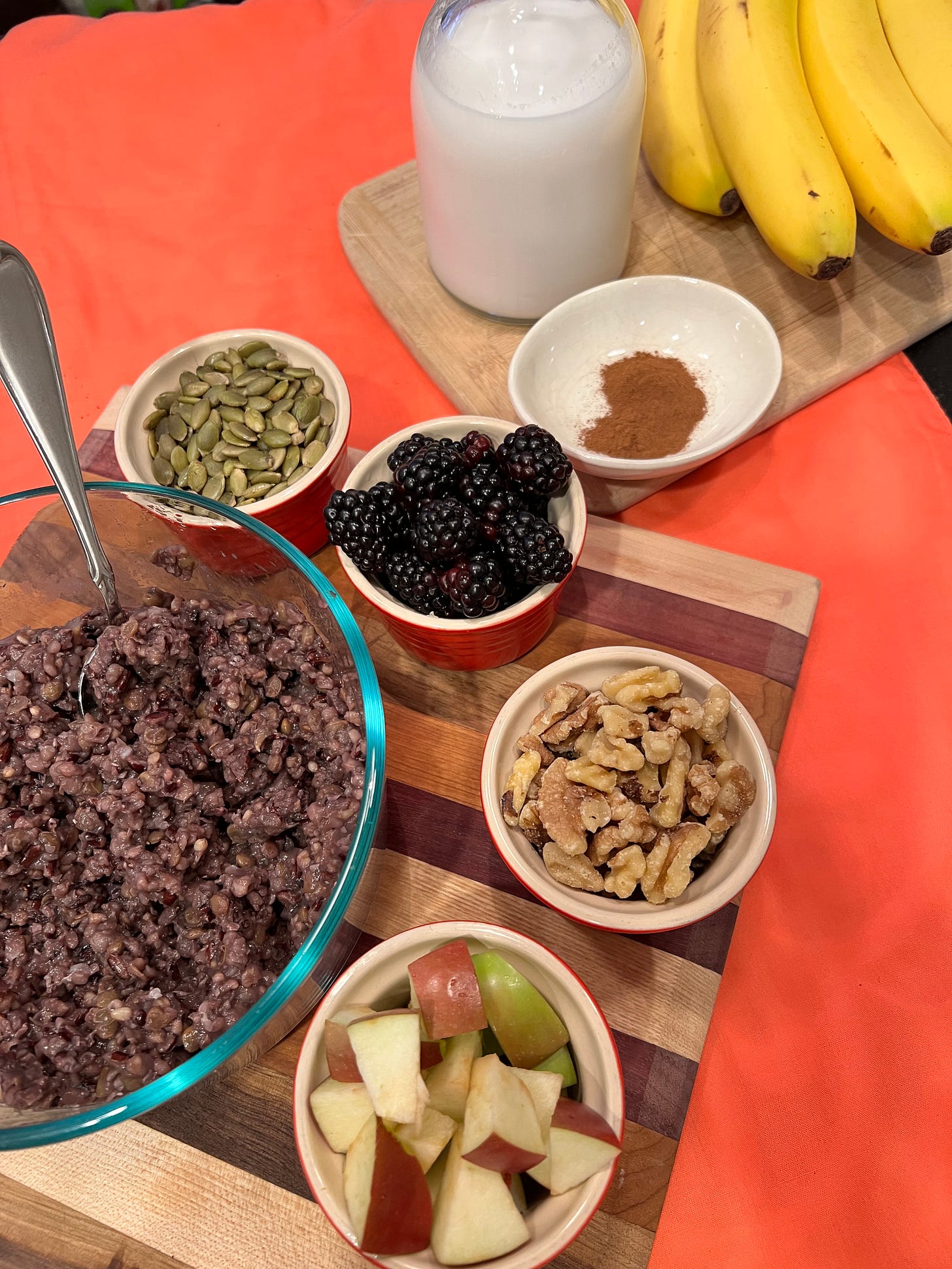Beans, fermentation and you: Gas truths
Back in August my weekly blog talked about getting enough protein in your diet through beans and other plants. I touched upon gas and beans but I don’t think I fully dispelled the myth because one of the biggest conversations I have with people about their hesitation to eat more beans or beans in general is, “I don’t want gas.” Or they have tried beans and said they had gas.
I am in no way doubting you had gas. We are human and that is a human function. What I am passing on is information I have learned from listening to Karen Hurd on many podcasts and researching to understand what she presents. We can experience gas by burping, by passing gas and also if we hold onto it, we bloat, which is very uncomfortable. Lets dig in a bit further.
Digestion: Enzymes or Fermentation
I am going to do my best in the following paragraphs to clear up that the gas is NOT from the beans. It is from fermentation. I know, splitting hairs, right? But hear me out. Once you understand the details of your hormones you may feel it’s worth going through the gas to get to the other side. Most Internet searches will reveal beans are not digested through our digestive enzymes because they have a sugar in them called oligosaccharide; we don’t produce the enzyme needed to break down oligosaccharides. Instead, beans are easily fermented because they are a carbohydrate. Beans get blamed, not the fermentation process.
Karen Hurd, the original Bean Protocol creator, posits and provides details that our hormones set off chemical reactions which cause fermentation. She would like us to understand how gas is produced. Some people eat beans or cruciferous veggies and don’t have any gas at all. She educates us to not look at the food, instead look at the mechanism of action that is creating the gas.
Below are two ways we digest our food. The first is through digestive enzymes.
Digestion Through Enzymes:
Enzymes in Action: Enzymatic digestion is the primary way our body breaks down food. It starts in the mouth, where salivary amylase begins to break down carbohydrates like starch into simpler sugars. In the stomach, gastric enzymes like pepsin get to work on proteins, breaking them into smaller peptide chains.
Small Intestine Magic: The real action happens in the small intestine. This is where most of the enzymatic digestion takes place. Enzymes from the pancreas, like lipase for fats and amylase for carbohydrates, further break down the food into its basic components. Here, the majority of nutrient absorption occurs. Digestive enzymes do not create gas.
Efficiency and Speed: Enzymatic digestion is highly efficient and relatively quick. It's a well-controlled, precise process that our body orchestrates to extract all the essential nutrients we need from our food.
The second is through fermentation. Think about fermentation. Beer and wine are both produced through the fermentation process. If you happen to live near an industrial plant using fermentation you know the smell. Or if you have ever tried to make kombucha, kimchi or another fermented food in your home you also know the smell. Unforgettable.
Digestion Through Fermentation:
Microbial Transformation: Fermentation is a process driven by microorganisms like bacteria and yeast. Instead of our body's own enzymes, these microbes are the ones doing the digestive work. Fermentation typically occurs in the colon or large intestine.
Complex Carbohydrates: Fermentation is especially important for the breakdown of complex carbohydrates that our digestive enzymes can't handle. For example, these microorganisms can break down fibers and other complex sugars from foods like beans, lentils, and whole grains.
Gases as Byproducts: Unlike enzymatic digestion, fermentation often produces gases as byproducts. Most often methane gas. These gases can cause flatulence or bloating, which is why certain foods like beans are blamed for their gas-inducing potential.
Slower Process: Fermentation is generally a slower process compared to enzymatic digestion. It can take several hours to days for the microorganisms to work their magic, depending on the food and the specific microorganisms involved.
Karen Hurd’s bean protocol has us eat beans, ½ a cup, 3 times per day to remove excess hormones from our body. She explained on Organic Olivia’s podcast, that
…fermentation is caused by hormones. Hormones cause gas, not beans. They (the person having gas) could be stressed or their hormones are peaking right before the menstrual cycle or they could be taking hormones exogenously–estrogen, thyroxine… Beans get blamed because they are a carbohydrate and are easily fermented. You’re eating the same beans you always ate but you don’t have gas anymore, huh? Well you finally ate enough beans to get rid of enough hormones that are triggering the signal transduction pathway, fermentation. (Season 3 Episode 3)
What hormones exactly was Karen Hurd talking about. The stress hormone is cortisol. You may be able to control your lifestyle but you cannot control how someone treats you at work. You can be in very stressful situations. We also have adrenaline (epinephrine and norepinephrine). Think college students before an exam, or lawyers in a courtroom, traders on the floor of the stock exchange or any high intensity career. Biologically female bodies have more estrogen and progesterone while biological males have more testosterone. All of these hormones can trigger reactions in the body. And beans help to remove these hormones as we have discussed.
What is happening in the digestive tract that makes the body choose fermentation over digestive enzymes?
We make enzymes in the intestinal tract that do an excellent job. Why did we move into a fermentation stage instead of a digestive enzyme? Per Karen Hurd, it’s because of hormones, particularly the fight or flight hormone adrenaline, but it is not just these two.
We have plenty of hormones and the hormones purpose is to trigger chemical reactions and to trigger signal transduction pathways so something will occur in the cell, some process. The hormones are usually not broken down in the liver into their chemical parts, they enter the intestinal tract as the hormone and they do not become passive; they continue to create chemical reactions in your intestines. If the hormones are at the right speed, at the right angle, in the right direction they can trigger a reaction at the receptor site. What we are talking about here is the perfect timing of the hormone triggering a reaction in the endothelial cell that lines the intestines. Which controls if we ferment foods or if we use digestive enzymes. The preference we want to use is digestive enzymes. If you have two processes that occur at the same time what is the priority? Fermentation because this is a hormonally triggered reaction. If you have a lot of gas or bloating you may want to reflect that you have a high hormonal load in your gut. (Holistic Life Navigation Podcast, Episode 95)
This is why it is so important to start slowly and work your way up to eating beans at each meal. Doing so will keep you healthy. Remember the beans help to remove the hormones into the toilet versus having them recycling back into your system. The health benefits of beans outweigh the embarrassment of passing gas. Last week I wanted to normalize talking about things we don’t talk about. This week, we can embrace being human and that we may have gas.
Share with your co-workers, family and friends a couple of the benefits and perhaps you can all start eating beans together. They can expect:
regular bowel movements; nothing is better than that.
regulate their blood sugar
lower risk of type 2 diabetes and heart disease
weight loss and weight stabilization
For those of you who have tried beans and are having difficulty with the gas due to fermentation there is an alternative you can try; psyllium husk. Yes, psyllium cannot be fermented because there is no carbohydrate to ferment. It’s straight soluble fiber. If you can’t eat beans there is still hope. You can remove hormones, too. One level teaspoon of psyllium husk is equal to a quarter cup of beans. If you want to have the equivalent of a ½ cup of beans it would be two level teaspoons of psyllium husk and you add it to water. Great news!
Recommended recipe
Cold Grain Cereal
I have no problem incorporating beans for breakfast. Eating a savory bowl of something I made for dinner earlier in the week is also a perfect breakfast for me. If you are not quite there, this may be a great way for you to ease in and check off the cold cereal urge you may have. Take a look.
This recipe is from Molly Patrick of Clean Food Dirty Girl. I have told you about this website before. She has a community of people who eat plant based and she has a team that teaches the community how to batch cook. I had this recipe on repeat for months a couple of years ago. I would make a batch and have it each morning and felt satiated for hours. I left for work very early so this was a game changer. Then one day, as we do, I forgot about it or moved on. As I am looking through the lens of breakfast and beans I think this will definitely find a way into your rotation. I eat more beans at each meal but this is a great way to lean into lentils in the morning. Especially those of you who like rice and steel cut oats. I made it again and still love it.
Ingredients
1/4 cup steel cut oats (45 g)
1/4 cup black rice (50 g / can sub brown rice)
1/4 cup toasted buckwheat (aka Kasha / 45 g)
1/4 cup brown or green lentils (50 g)
3 1/2 cups water
1 teaspoon vanilla extract
Pour all of the dry ingredients into a bowl and cover with water overnight. If you don’t have that kind of time, let soak for at least an hour or two.
Heat your medium pot up for about 2 minutes, strain your ingredients and add to the pot. Saute grains for 2 more minutes, stirring as you go.
Add the 3 1/2 cups of water, stir and place the lid of the pot at an angle and simmer for 30 minutes. Stir often to prevent the grains from sticking to the bottom of the pan. Turn off the heat, add vanilla, stir and allow to cool. Store in your refrigerator.
When ready to eat, add the porridge to your bowl, mash with a potato masher to get any clumps out.
Add berries, nuts, bananas, apples, raisins, seeds, whatever you would like along with your choice of dairy or nondairy milk. The key is the fruit, nuts and seeds for texture.
If you’ve had a week already and you don’t feel like coming up with combinations here are a few of my favorites:
Apples, cinnamon, blueberries and walnuts
Raspberries, bananas, sliced almonds, seeds
Any berries, sunflower seeds, a tiny bit of maple syrup, nuts
Cranberry compote or craisins, pepitas, walnuts and bananas
Substitutions/suggestions:
Can’t find black rice, use brown rice and sub black lentils in for the lentils if you still want color variation.
Have Mung beans in the cupboard? Use those instead of lentils. It is a very forgiving recipe.
If you like hot cereal instead, this can be eaten warm as well. But the key here is finding a solution for all of you cold cereal lovers who no longer want to eat boxed cereal. Yay!
I add coconut milk or oat milk in this cold cereal; both are great.
Enjoy
Contact
If you have any additional questions on the bean protocol, digestion either through enzymes or fermentation, and/or psyllium please email me at Denisemancieri1@gmail.com. Feel free to comment below if there are topics you would like to see.
Please like this newsletter by clicking the heart emoji if you find it may assist you or others. Thank you!
Note: I am not a doctor. I am a teacher and an educator with an earned doctorate in educational leadership. I enjoy research and I can take large amounts of information and parse it out into easily understood and digestible steps so people understand what is happening to their body and possible steps to reverse it with food as medicine. I have healed my own GI issues through choices with food. I followed Karen Hurd’s bean protocol diet, I meditated and still do and I healed. I feel compelled to be in service and educate others as the more people eating beans, alongside a healthy diet and sharing their stories the more people will live a healthier existence. Joy, peace and freedom abound. Please see your doctor and discuss nutritional options before you change any course of action with your health.

